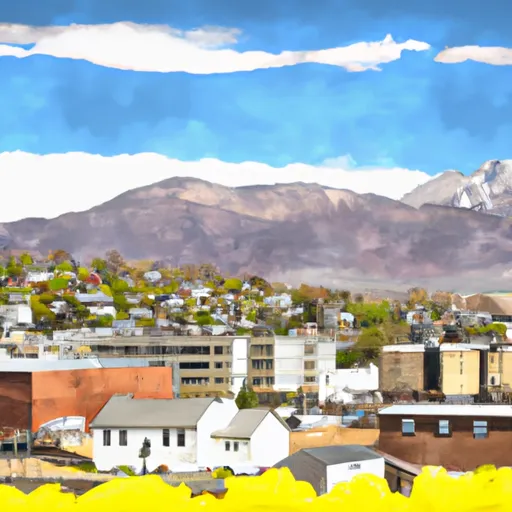-
 Snoflo Premium
Snoflo Premium
Get unlimited access to all our content
With no Ad interruptions! - Start Your Free Trial Login with existing account
Lindon
Eden Index
Climate
9.4
•
Recreation
7.5
•
Community
2.9
•
Safeguard
7.1/10

Lindon, Utah is a charming city located in Utah County, nestled in the beautiful foothills of the Wasatch Mountain Range. The climate in Lindon is classified as a semi-arid, with hot summers and cold winters. Summers tend to be dry and warm, with temperatures often reaching the high 90s°F (35°C), while winters are cold and snowy, with temperatures dropping below freezing and an average annual snowfall of around 57 inches.
Lindon benefits from its proximity to the Provo River, which runs through the city, providing a valuable water source. The river also offers opportunities for water recreation, such as fishing, kayaking, and paddleboarding. Additionally, nearby Utah Lake provides further opportunities for boating, fishing, and water sports.
Outdoor enthusiasts will find a plethora of recreational opportunities in the surrounding mountains, including hiking, mountain biking, and rock climbing. The area boasts several picturesque trails, such as Dry Creek Trail and Timpooneke Trail, which offer stunning views of the valley and the surrounding landscape. Lindon is also close to American Fork Canyon, known for its scenic drives, camping spots, and hiking trails.
Overall, Lindon, Utah offers a diverse climate, access to water resources, and a range of outdoor activities to explore and enjoy.
What is the Eden Index?
The Snoflo Eden Index serves as a comprehensive rating system for regions, evaluating their desirability through a holistic assessment of climate health, outdoor recreation opportunities, and natural disaster risk, acknowledging the profound impact of these factors on livability and well-being.
Climate Health Indicator (CHI): 9.4
Lindon receives approximately
459mm of rain per year,
with humidity levels near 63%
and air temperatures averaging around
11°C.
Lindon has a plant hardyness factor of
7, meaning
plants and agriculture in this region tend to thrive during the non-winter months.
By considering the ideal temperature range, reliable water supplies, clean air, and stable seasonal rain or snowpacks, the Climate Health Indicator (CHI) underscores the significance of a healthy climate as the foundation for quality living.
A healthy climate is paramount for ensuring a high quality of life and livability in a region, fostering both physical well-being and environmental harmony. This can be characterized by ideal temperatures, reliable access to water supplies, clean air, and consistent seasonal rain or snowpacks.
Weather Forecast
Streamflow Conditions
Jordan
Area Rivers
Jordan
Snowpack Depths
Jordan
Reservoir Storage Capacity
Jordan
Groundwater Levels
Recreational Opportunity Index (ROI): 7.5
The Recreational Opportunity Index (ROI) recognizes the value of outdoor recreational options, such as parks, hiking trails, camping sites, and fishing spots, while acknowledging that climate plays a pivotal role in ensuring the comfort and consistency of these experiences.
Access to outdoor recreational opportunities, encompassing activities such as parks, hiking, camping, and fishing, is crucial for overall well-being, and the climate plays a pivotal role in enabling and enhancing these experiences, ensuring that individuals can engage in nature-based activities comfortably and consistently.
Camping Areas
| Campground | Campsites | Reservations | Toilets | Showers | Elevation |
|---|---|---|---|---|---|
| Bear Canyon | 6 | 6,631 ft | |||
| Blackhawk | 15 | 7,962 ft | |||
| Payson Lakes | 113 | 7,981 ft | |||
| Tinney Flat | 13 | 7,063 ft | |||
| Spanish Fork River Park | None | 4,966 ft | |||
| Maple Lake | 7 | 6,422 ft | |||
| Maple Bench | 10 | 5,997 ft | |||
| Ponderosa Uinta | 29 | 6,265 ft | |||
| Canyon View RV Park | 25 | 4,719 ft | |||
| Spanish Oaks Campground | None | 5,124 ft |
Nearby Ski Areas
Catastrophe Safeguard Index (CSI):
The Catastrophe Safeguard Index (CSI) recognizes that natural disaster risk, encompassing floods, fires, hurricanes, and tornadoes, can drastically affect safety and the overall appeal of an area.
The level of natural disaster risk in a region significantly affects safety and the overall livability, with climate change amplifying these risks by potentially increasing the frequency and intensity of events like floods, fires, hurricanes, and tornadoes, thereby posing substantial challenges to community resilience and well-being.
Community Resilience Indicator (CRI): 2.9
The Community Resilience Indicator (CRI) recognizes that education, healthcare, and socioeconomics are crucial to the well-being of a region. The CRI acknowledges the profound impact of these elements on residents' overall quality of life. By evaluating educational resources, healthcare accessibility, and economic inclusivity, the index captures the essential aspects that contribute to a thriving community, fostering resident satisfaction, equity, and social cohesion.

